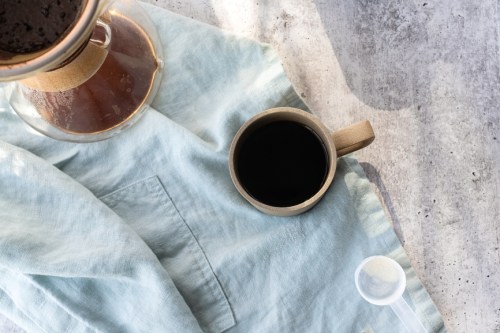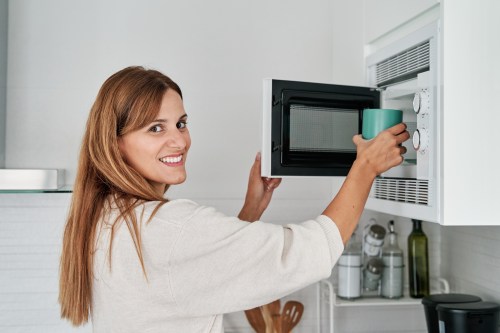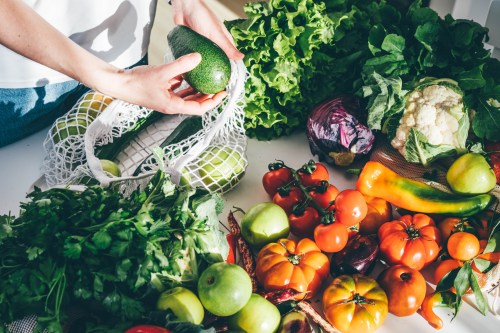Our editors independently select these products. Making a purchase through our links may earn Well+Good a commission
‘I’m a Barista, and This Is the Exact Coffee-To-Water Ratio To Follow To Make the Best-Quality Cup of Coffee’
A barista and coffee shop owner shares the exact coffee-to-water ratio to follow to make the best-quality cup of coffee.

Honestly, why does coffee shop coffee always taste better than what I’m capable of brewing at home? Whether it’s the super-fresh beans they roast, the fancy equipment they have access to, or the fact that baristas are obviously way more knowledgeable about coffee than the vast majority of us, coffee shop coffee never fails to check every box.
Experts in This Article
coffee expert and co-owner and founder of Bean &
But like most things in life, there’s always room for growth, and cultivating our ability to brew a mean batch of coffee at home is something we can strive for with guidance—and eye-opening tips—from industry experts. Most recently, we spoke with Jiyoon Han, co-owner and founder of New York-based coffee company Bean & Bean, who shared the ideal golden coffee-to-water ratio for making a perfectly well-balanced cup of coffee at home.
What’s the ideal “golden” coffee-to-water ratio for the best-quality coffee?
According to the National Coffee Association of the USA, the “golden ratio” of coffee to water for a cup of joe is one to two tablespoons (about 10 grams) of ground coffee for every six ounces of water (or approximately 1:18 grams of coffee to water). This is roughly the same as the Gold Cup Standards set by the Specialty Coffee Association: the golden ratio—55 grams per liter (also about 1:18 grams of coffee to water), plus or minus 10 percent.
But plot twist: This ratio isn’t exactly what Han deems as the “golden” standard.
When brewing her own coffee or at the shop, Han’s ratio and concentration vary depending on the roast. “In reality, most people find this ratio—which is roughly 1:18 grams of coffee: water—to produce a noticeably weak cup of coffee,” Han says. Instead, she opts for a slightly higher concentration as a rule of thumb. “In most cases, I would say a 1:16 ratio is a good starting point.”
That said, it primarily depends on the type of roast you’re working with. “If you like your coffee a little stronger, or if your coffee is roasted on the darker side, 1:15 would work well, and 1:14 if it’s a really dark roast coffee,” says Han. On the flip side, lighter roasts can be made (and my benefit flavor-wise) when made with more water. “A light roast coffee can often benefit from a little more water, in which case you could start with 1:17 and adjust from there,” says Han.
Ultimately, it all depends on your personal preference, and the best way to find out is by conducting a few taste test experiments at home and taking note of your observations.
A barista’s coffee-to-water golden ratios:
- General golden ratio 1:16
- Stronger coffee/dark roast 1:15
- Very dark roast 1:14
- Light roast 1:17
*Measured in grams of coffee to water.
A few additional considerations to keep in mind when figuring out the perfect brewing ratios
First and foremost, don’t forget to jot down your findings when playing with different kinds of roasts, coffee-to-water ratios, and concentrations at home. (Temperature and brewing method, too!) Many baristas keep a small notebook handy to remember their ideal brewing ratios depending on the selection of the day. This makes replicating the perfect cup of java over and over again a walk in the park; no guessing games are necessary.
Once you’ve honed in on the best ratios, Han says that it can be applied to several different brewing methods, including immersion-style brews (like French press), pour-overs, or auto-drip machines. She also wants you to keep in mind that though you may be accustomed to cooking with the imperial system (i.e. tablespoons), Han recommends converting your measurements to the metric system (i.e. grams) when working with coffee. This is because measuring by weight, as opposed to volume, tends to be more accurate and consistent when it comes to coffee beans.
And FYI: Even if you don’t have a digital coffee scale handy (though it might be well worth the investment), you can certainly still make it work. “It’s difficult to recommend ratios in tablespoons, since the amount of coffee can vary widely depending on how fine the coffee is ground. But on average, a tablespoon of ground coffee will—very roughly—be five grams. With this in mind, you could go by a ratio of one tablespoon of coffee for every 2.5 ounces of water,” Han says.
A registered dietitian shares the benefits of drinking coffee:
Sign Up for Our Daily Newsletter
Get all the latest in wellness, trends, food, fitness, beauty, and more delivered right to your inbox.
Got it, you've been added to our email list.










